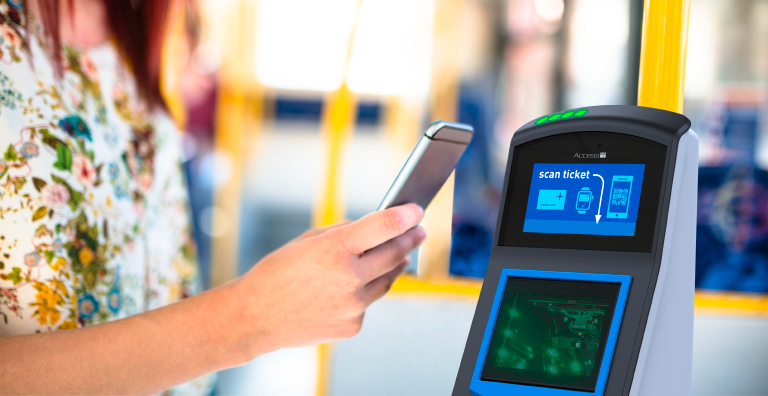Mass Transit: Are Your Ticket Readers All Set For Contactless Payments?
Contactless ticketing, for every mode of public and commercial transportation, is becoming increasingly ubiquitous. That’s great for travelers, as they’ve come to expect ease of use and faster throughput. This is great news for operators too, as they benefit from reduced operational costs that come with lower overhead. For many of these operators, a rip-and-replace mentality is certainly neither financially nor practically feasible while existing ticketing solutions are already in place and in daily use. In addition, imagine the issues customers would experience if those systems were suddenly switched off. The optimal solution for a positive passenger experience is to bring in the new while slowly phasing out the old, allowing people to adapt and adopt at their own speed.
The Benefits
- Contactless ticketing facilitates QR/barcode, near field communication (NFC) tickets, digital wallets and bank and credit cards to be presented to a single, intuitive-to-use, point of presentation
- Ticket reading is fast and dependable with clear visual indications when tickets and cards have been successfully read, meaning passenger throughput is maximized for an improved user experience and reduced operational costs
- Mobile ticketing apps also offer a wealth of advantages for passengers, who simply present their mobile app to the ticket validator and the driver can clearly see the ticket type and its validity — making ticket validation and boarding a simple, fast and efficient process — even when the driver is busy operating the vehicle
The Catch
Public-facing ticketing systems need to address a widely varied audience — from the 18-year-old student going off to university, to the CEO heading to the office or the grandfather heading into the city for a day of sightseeing. Each group has very different needs, different learning curves and varied access to the use of the technology.
One Part of the Solution: An Open Architecture
The beauty of non-proprietary, open architecture ticket readers and ticket validators is that they allow operators to bring in the new while supporting the old. This means that they can plan the withdrawal of ticket types while they educate and help their passengers through those changes. In addition, operators can install devices with all the capability they need for the future already built in but not necessarily enabled. As requirements change, functionality can be turned on without the need to replace or upgrade hardware. A prime example of this would be the ability to accept contactless payments.
Installing ticket readers with an open architecture is important, but there are other key factors to consider when selecting appropriate hardware. Our executive brief explains further.
Contactless and mobile phone ticket readers and validators can be located at train gates, railway platforms and ticket offices, as well as on buses via vehicle-mounted validators. They facilitate full EMV (Europay, Mastercard and Visa) contactless payment capability with a simple tap, allowing speedy payment using those major payment forms, as well as Apple Pay, Samsung Pay or Google Pay, via their mobile device’s digital wallet. The move from traditional ticketing to mobile ticketing is a key driver for a better passenger experience, faster throughput and increased revenue protection that results from strong and secure authentication. By purchasing infrastructure- and software-agnostic ticket readers and validators, operators can address the varied needs and comfort levels of their passengers and at the same time benefit from a future-proof infrastructure.
Learn more about contactless ticket readers and validators for mass transit >>
Ludo has a wealth of experience in the Commercial and Governmental identity markets and leads the sales team globally for HID's Access-IS business as well as the Public Biometrics business in Europe. In addition to holding a degree in Electrical Engineering, Ludo has a BSc (Hons) in European Engineering Business Management and a Masters in International and Industrial Sales and Marketing. Connect with Ludo on LinkedIn >>
